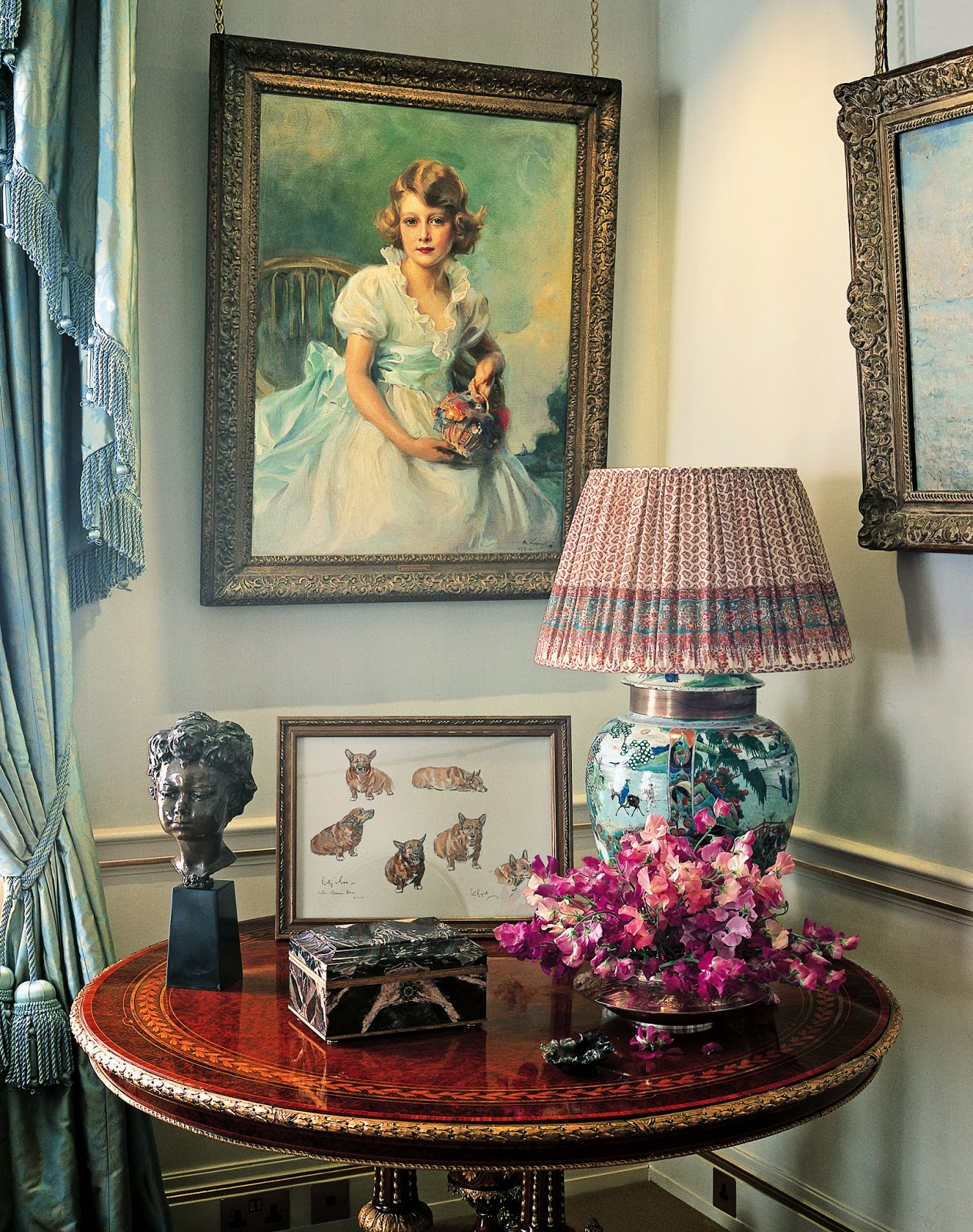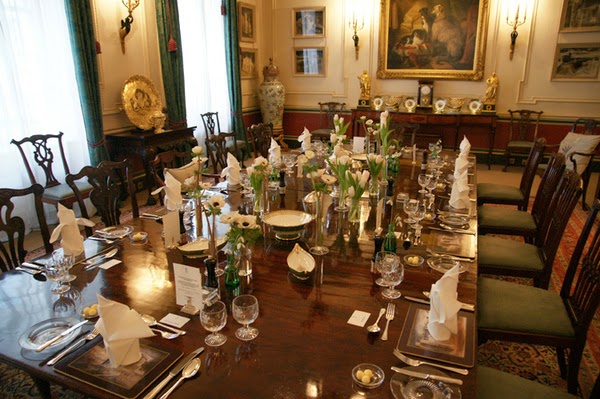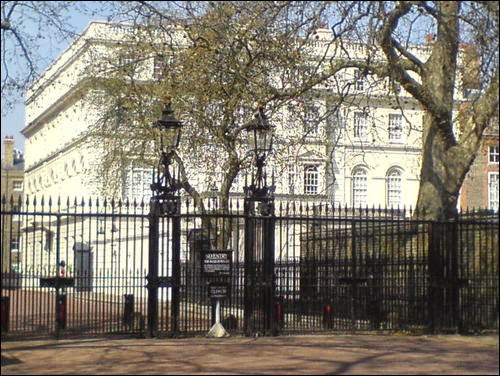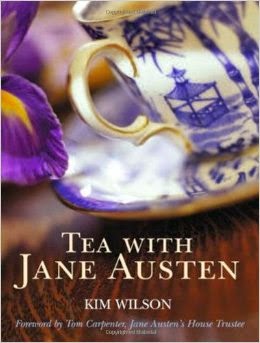Victoria arrives!
In front of the hotel
Victoria here. You wouldn’t believe the scene I encountered upon entering our room at the Sloane Square Hotel. Kristine, usually smiling and eager — Kristine, usually dressed attractively and appropriately — Kristine, usually eager to impart all her latest adventures — yes, this Kristine was a faint shadow of herself. I won’t describe her appearance or her demeanor any further. You wouldn’t believe it!
Of course I had been in France for two weeks before kissing Hubby goodbye at DeGaulle and flying to Londonwhile he returned home to the US. I was thoroughly accustomed to the time zone. I was ready for our big London fiesta: over three weeks in heaven — exploring, learning, photographing, leading The Duke of Wellington tour, more touring — a perfect storm of delight.
Kristine and I had been looking forward to this first meeting of ours in London, which would signal the beginning of our long anticipated English Idyll. So who was this disheveled half-conscious wraith that faced me now upon my arrival in our cluttered room, already looking like the typhoon had just passed on? Well, never one to coddle — or condescend — I shed my own two, compact travel bags and began to chatter. “We had a great time in Paris, blah, blah, blah…”
Two eyes made a valiant effort to open wide…and failed. Slight acknowledgement of my arrival with a nod.
“We went to Malmaison, loved the Rodin Museum, blah, blah, yadda…..why are you sitting there in the window like that? Were you watching for me?”
At last, the wraith sat up and came alive. “No. I didn’t want to lay on the bed because I’d have fallen asleep and then I’d screw up my sleep pattern. I have to stay awake until bedtime tonight. So, here I am, looking out of the bay window just like Brummell at Whites.”
Well, not exactly, but close enough. We managed a big hug and, ever so gingerly, Kristine began telling me of her ordeal. And there was Big Red, all right. Immense enough to carry supplies for the Siege of Badjos, as well as several boxes of materials for the Wellington Tour.
Aha! No wonder Kristine felt like a beast of burden — she had way too much to carry.
Kristine picks up the tale –
“I need a drink,” I told Victoria.
“I shouldn’t wonder,” she replied. “The state of you!”
“Duke of Wellington pub?”
“Absolutely! As planned. Egad, but we’ve been looking forward to this moment for months now. Our first drink together in London! Almost a month of Wellingtonmerriment ahead of us! Downton Abbey! Copenhagen! The WellingtonTour! Open Houses Weekend! Mudlarking! . . . . . . . why on earth are you wearing those things?”
I’d pulled on my fur topped boots while Victoria was rhapsodizing about the weeks ahead of us. “You’re going to have to trust me on this – they’re the only shoes I can wear right now. Everything else is too painful.”
Victoriablinked. “It’s in the 70’s outside. Those are boots.”
“I know. But they’re all I have at the moment.”
“Yeah, but it’s summer and . . . . . . . “
I grabbed Victoriaby the arm and practically frog marched her to the door, “Let’s go. I’ll tell you all about it once we’re at the pub.”
“Are you really going to wear those in public? They’ve got fur, for God’s sake.”
“I can leave a few minutes after you and meet you at the pub. That way no one will know that you’re with me. And my feet will be under the table once we get there. No one will notice my boots.”
“Don’t be silly.”
“Sorry. I thought you were ashamed to be seen with me.”
“I am ashamed to be seen with you. I said don’t be silly because I can’t go without you. I don’t know where the pub is.”
Thankfully, it was but a short stroll to the
Duke ofWellington pub on Ebury Street. It was early enough that the place was nearly deserted. An adorable barman who looked to be about thirteen years old asked us what we’d be having.
Now a strange thing happened. As you may recall, I had been dreaming of a stiff rum and Coke all day long, but now that we stood before the beer taps, I suddenly wanted nothing more than a cold pint. Unfortunately, the pub had many micro brews and specialty ales. Not a recognizable brand in sight. The infant barman was kind enough to allow Victoria and I to taste a few before we ordered.
In the end, Victoria and both opted for the Oranjeboom which was fabulous. Here’s how it’s described:
‘Quirkily Continental’, Oranjeboom is a Dutch classic and was judged the ‘best draught lager in the world’ at the Brewing Industry International Awards. A delicious, easy-drinking Dutch drop with a hay-like hue and a herbaceous, grassy and fruity fragrance. Citrus notes on the palate speak softly of orange, kiwi and lemongrass buttressed with a hint of caramel sweetness and a gentle, drifting finish.
After our first sips, we took up our glasses and spent a good few minutes examining and photographing all of the Wellington memorabilia ranged around the walls. They even had a copy of one of my favourite Wellington portraits, which I fondly refer to as the Grandpa Artie image.
Finally, we found an empty table and took a load off. Victoria told me about her two weeks in France, whilst I regaled her with tales of my poor feet. And the Royal Hospital.
“I still can’t believe that no on there knows where the painting is hung,” I said, relating the story of my search for the painting entitled The Chelsea Pensioners Reading the Waterloo Despatch.
“Or what the painting is,” Victoria added.
“Yeah. I mean where else would it be but at the Royal Hospital?”
“Come to think of it, I could swear I’ve seen it somewhere before,” Victoria mused.
“At the Royal Hospital?”
“I can’t recall, but somewhere. You know, there were probably a few copies made when it was commissioned by the Duke of Wellington. It was a fairly common practice. There are at least three copies of the Lawrence portrait of Artie.”
“I know. I think I’ve seen the Chelsea Pensioners before, too, come to think of it.”
“Where? You haven’t been to the Royal Hospital before today.”
“Damned if I know.”
“Do you think we saw it when we went to the National Army Museum?” Victoria asked.
I took a sip of beer. “Could be. It seems to me that I saw it someplace in London. Someplace connected to Artie.”
“Where else in London could it be?” Victoria asked. “Horse Guards?”
“Haven’t the foggiest, but I’m going to go back to the Royal Hospital when we get back to London in a few weeks time to see if they find out where it is. This mystery is driving me crazy.”
Eventually, we moved on to discussing other things and ordering dinner, after which I was truly ready for bed. As I fell asleep, I thought about our agenda for the next day – the newly renovated Kenwood House and Highgate Cemetery. Life was good. Even when your feet hurt.
Next installment coming soon!











.jpg)


.jpg)
















